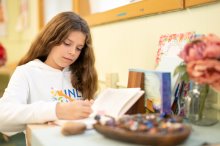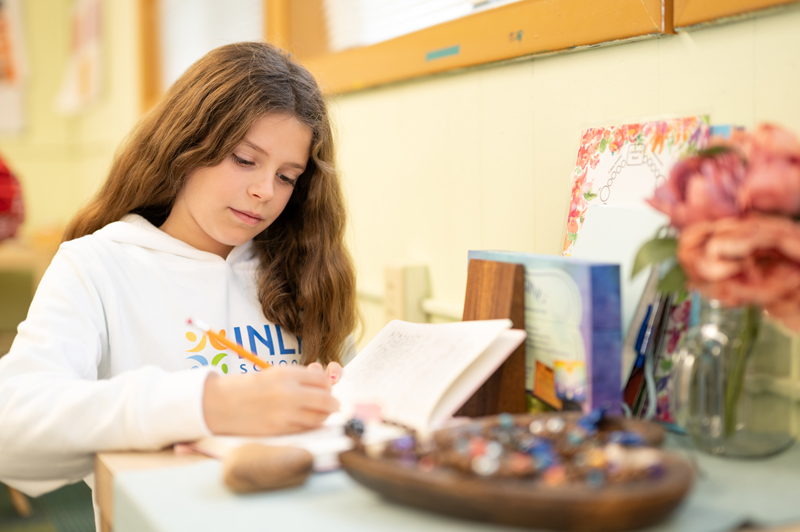What is Peace Education?

Maria Montessori believed that a more peaceful world begins with the education of children. At Inly, peace education is integrated into every classroom to promote calmness, kindness, and centeredness.
Below are a few examples of Peace Education that are integrated into the daily routine:
 The Peace Table:
The Peace Table:
The Peace Table serves as a haven for cultivating peace within each child. It features a 'glitter jar,' marble mazes, a geometric puzzle, and other items designed to promote calm mindfulness. Cards with breathing activities and visual strategies for strategies to focus the mind and body provide tools for self-regulation.
Morning Circle:
The day begins with Morning Circle, a time of unity and connection. Each child is warmly greeted by name and participates in 'air shakes' with a classmate. During this circle, students have the opportunity to sign up for shares, allowing them to share exciting news from their lives with their classroom community.
Closing Circle – Shout Outs:
At Closing Circle, students celebrate kindness through 'shout-outs.' This forum allows children to recognize and appreciate the kind acts or gestures of their classmates. It fosters a culture of acknowledgment and gratitude, reinforcing the value of empathy and consideration.
A Montessori “Peace Greeting” at Lunch:
Lunchtime begins with the Montessori “Peace Greeting,” setting a positive tone for shared meals. This practice encourages children to approach their mealtime with respect, kindness, and a sense of community.
Continent Studies – Peacemakers:
During continent studies, students delve into the lives of notable 'Peacemakers' from each continent. They explore how these individuals fought injustice in peaceful and impactful ways, inspiring children to understand the power of peaceful activism in creating positive change.
At Inly, we believe that a holistic education goes beyond academics, and nurturing the social and emotional well-being of our students is crucial. The practices mentioned above are integral to creating an environment where each child feels valued, connected, and equipped with the tools to navigate the complexities of their emotional world.




















